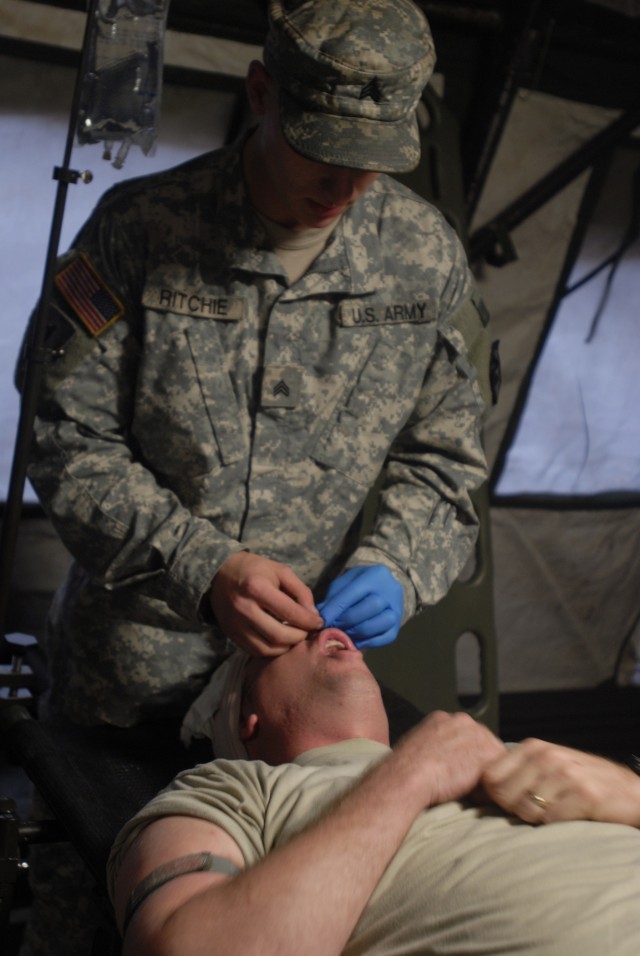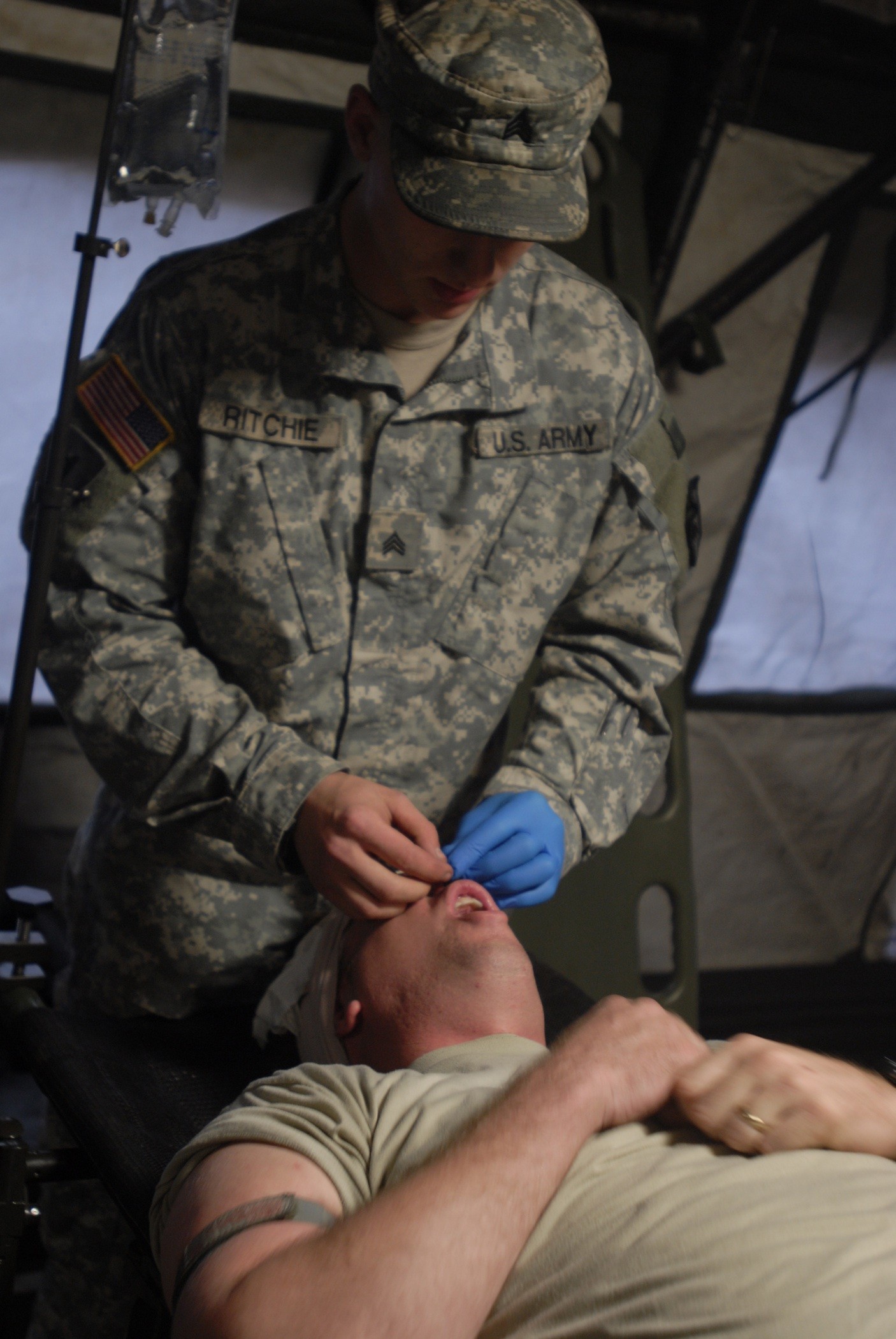FORT BRAGG, N.C. - The 1st Squadron, 38th Cavalry Regiment, 525th Battlefield Surveillance Brigade finished a two-month, intensive training cycle with platoon-level situational training exercises which ran from Nov. 9 through 13 at Fort Bragg's Freedom City training range.
The squadron is preparing to deploy to its massive readiness exercise at the National Training Center at Fort Irwin, Calif., in January. The training exercises are preparing the unit for a deployment to Afghanistan this summer.
"One purpose of this exercise is to get our troops used to being able to train and incorporate foreign security forces into their missions," said Maj. Jeff P. Mersiowsky, the unit's operations officer.
To begin, platoons linked up with foreign security forces, who were actually role players acting as the Afghanistan national army. Then, the Soldiers proceeded to the Ali Market, a nearby mock village, to conduct a key leader engagement with the local tribal leader.
"We also have a long range surveillance unit out here conducting surveillance on the town of Dahaneh, watching a local national who is a high-value target," Mersiowsky explained during the mission.
At the key leader engagement, the platoon leader talked with the tribal leader, while the platoons maintained security. Simultaneously, and with permission from the tribal leader, Soldiers searched the surrounding structures looking for weapons, munitions, explosives and drugs.
"The key for this training is getting the junior Soldiers to keep their eyes open and their minds open as well," said Staff Sgt. Timothy M. Greval, senior scout from 1st Plt., A Troop.
As the platoon moved in a mounted patrol from one objective to another, the Soldiers were on constant alert for enemy fighters and improvised explosive devices.
"We've got to constantly relay to them that everything we do here is about what the next step is, and for us now, the next step is NTC," Greval said. "After that is the show," he said referring to their upcoming deployment to Afghanistan.
"It's a big responsibility, it really is," said Spc. William F. MacMillan, M-2 .50 caliber machine gun gunner with 1st Plt., A Troop. "I've been a gunner since I've been in the Army, but it's my first time being on the lead vehicle."
The lead gunner has the same responsibilities as other gunners because all are looking for the same things - improvised explosive devices, choke points, anything of that nature, explained MacMillan. The difference is the lead gunner is usually the first person to come in contact with the enemy.
"This is what I joined the Army for," explained MacMillan, a native of Everett, Mass.
From the beginning, the Soldiers appeared motivated, and some even left a lasting impression on their leadership.
"Specialist Alex Segee, one of my medics, built up a lot of confidence with his troops out there," said Sgt. Bryan A. Richie, combat medic and noncommissioned officer-in-charge of the forward aid station.
Segee had eight minutes and a patient suffering from a femoral leg bleed and two bilateral leg fractures. All he had was his aid bag with the patient laid across him in the back of a moving high-mobility multi-purpose wheeled vehicle.
"In eight minutes Segee put a tourniquet on a femoral leg bleed and put these good splints on this Soldier's legs," said Richie, with Headquarters and Headquarters Troop. "Doing it for practice is one thing. Doing it in a training environment is another thing, but doing it in the back of a HMMWV when you've got two inches of room to move around, I mean . . . it's awesome."
The training emphasizes numerous scenarios that could be encountered in Afghanistan.
"The training overall was real world," said 1st Lt. Thomas M. Flood, 1st Plt. platoon leader from Jacksonville, Ark. "I am kind of new coming to the platoon; but the NCOs knew exactly what they were doing, and that's really what made the mission a success."


Social Sharing